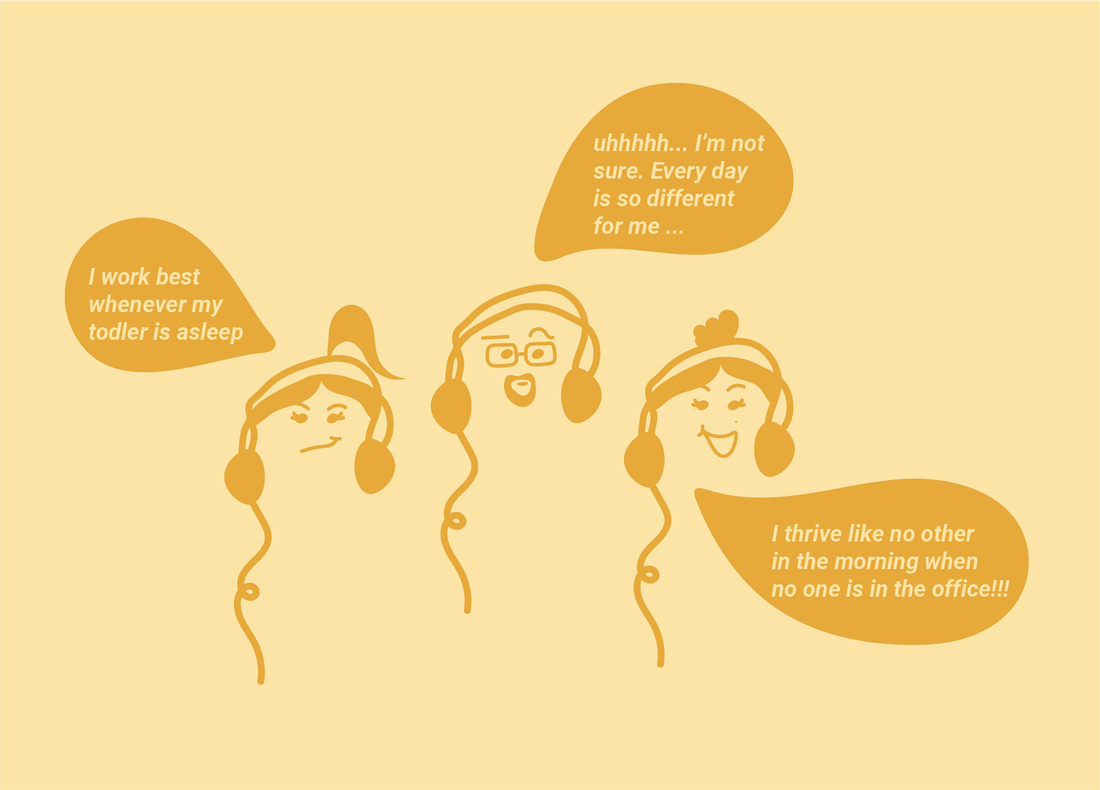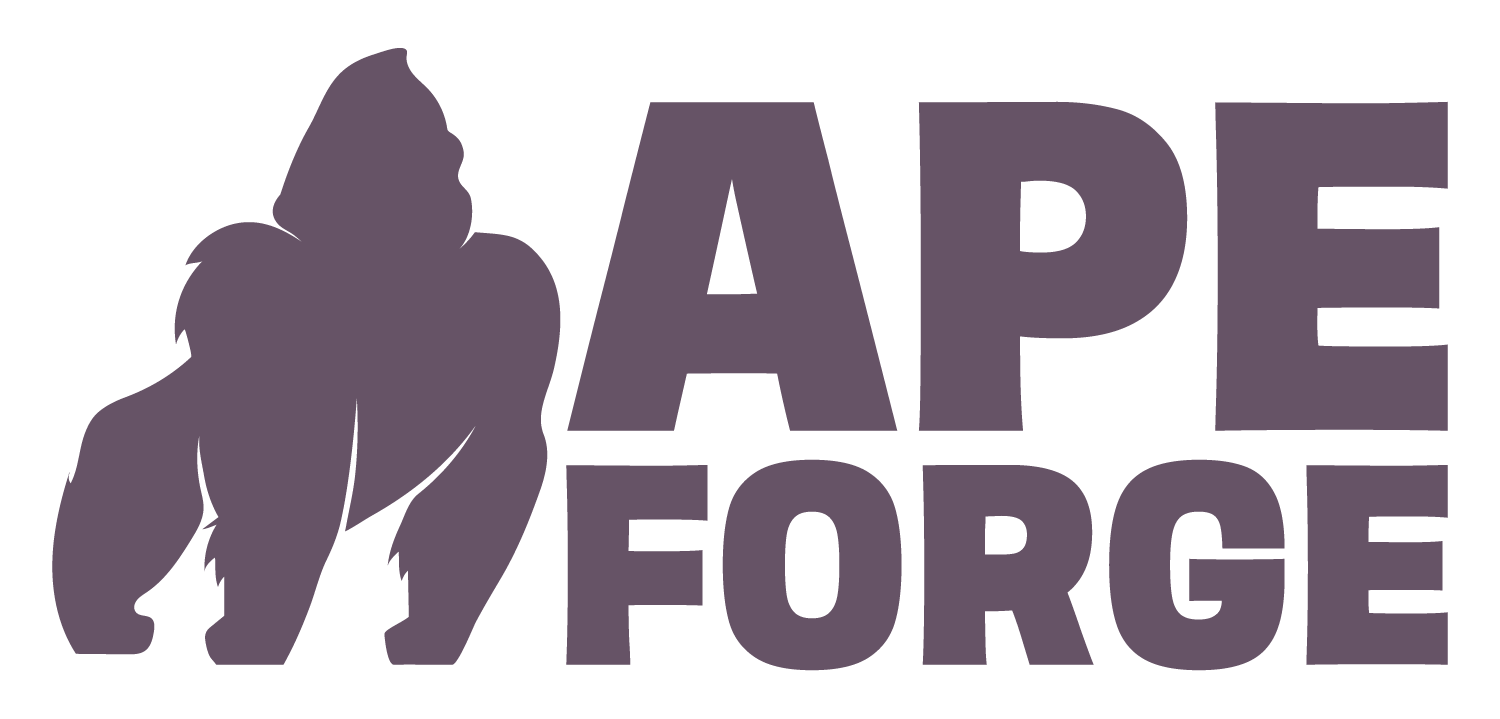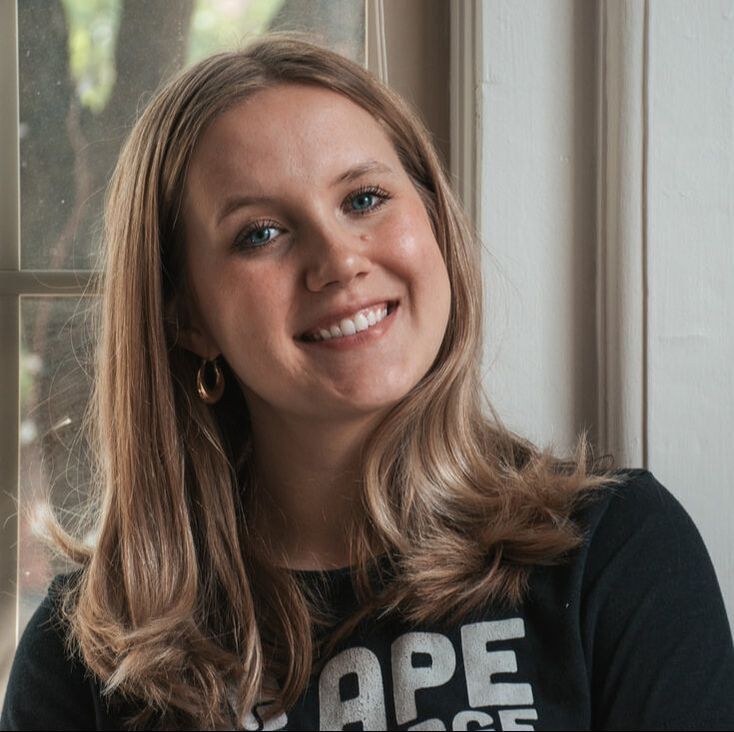The Everyday Life of a Designer

After reflecting on our lives as designers in episode 2 of our new podcast ‘Designers AF’ this week, we have found it evident that being a Graphic Designer means that everyday is different.
Some of the factors that affect the differentiating daily schedule of a designer are as follows:
- Correlation between the time of day and our creative drive
- Type of work that is on our task list
- The space surrounding you
- Project deadlines
- Seasonality of burnout
All 5 of these factors create a harmonious work life for a designer, but the true harmony is found in the ability to change the level the priority each factor holds on a day to day basis. One day we may be on a creative high, willingly sitting behind our computer from sun up to sun down because we can’t help the excitement that comes with the end vision of the logo we are working on. The next day, though, we may only be able to get a few tasks done because our creative drive is on low due to other personal priorities that are weighing it down. There is beauty in both kinds of days and it is crucial to embrace both… especially the sun up to sun down kind. That doesn’t happen often… but, yes, we do feel like prodigies when it does.
I could ramble on for days about the different types of days designers can experience… but I don’t think anyone wants to read a multi-chapter blog about all of this. Especially designers. Well, that's unless we really don’t want to start the first draft of that logo we were supposed to have done 3 days ago. Why not take a few more hours to procrastinate and pray our client is too busy to realize!
For real though. Let’s go through the 5 most crucial factors that create differentiation in a designers daily routine.
1. Correlation Between Time of Day and our Creative Drive
The time of day in which a designer tries to work will only have a positive outcome if their creative juices are pumping. If we open our laptop and feel no adrenaline while looking at our task list, we might as well shut our laptops and spend our time elsewhere. That time will just be wasted as we sit on tik tok, telling ourselves ‘5 more videos then we will put the phone down and start building that website’. Next thing you know 2 hours have passed and our laptop is dead because we didn’t plug it in when we opened it.
A lot of designers have that time of day that works best for them. Even the time of day our 3 design team members work is different.
For Tori, it’s typically whenever her little guy is sleeping. She’s a toddler mom working from home, so of course we let her decide when to prioritize her family over her work. Chances are that Matt will be up to respond to her when she’s working at 12 AM anyways.
For Allie, it’s typically 8 AM when she is the first one to arrive to the office. She thrives when the 2 large iced coffees she chugged in a top speed of 3 minutes are coursing through her body. She also has no one around to talk to, so she's forced to entertain herself somehow (you guessed right, she has raging ADHD. She never shuts up).
For Matt, we’re still trying to figure that one out. It seems like he's never not working, but at the same time is never working?
2. Type of Work that is on our Task List
A designer's list of tasks can make or break their level of productivity each day. Dread the idea of designing a web layout? Well, you're in luck! You were just assigned a web project! Good luck trying to get anything done this week.
That is why it is crucial for designers to make sure they are taking on projects that excite them. If we are working on a project that we’re not vibing with, it will drag us down for days. And when it is done, it won’t be great. This creates a lose-lose situation for both the client and the designer. If you aren't aware, that is quite literally the worst possible outcome of any project ever known to man.
This is why we take the time at Ape Forge to communicate both internally as a team and externally with potential clients. We don’t want a potentially amazing project to have a bad outcome just because our team isn’t excited about it. We would rather turn a potential client down to point them in the right direction. We want them to be successful, with or without us, and celebrate with them no matter what.
3. The Space Surrounding You
Now this one. This one is so important. The space around a designer is so crucial to their everyday success. It can either inspire or hinder us. Our creative space needs to be crafted to perfection for both our physical and mental needs.
When it comes to our physical needs, we need to think of comfort. Some questions you could ask yourself when creating this space may be:
- Will my butt hurt after sitting in this chair in an hour?
- Are there multiple areas I can place myself to work?
- Will it be easy to function in these spaces?
On the opposite end, mental needs are just as, or even more, important when compared to the physical needs of a space. You need to feel safe in the space you work in. Some questions you could ask regarding the mental needs of your space include:
- Are there elements in this space that will distract me from my work?
- Are there items in here that can help spark inspiration?
- Does the space relate to my personality?
- Will I feel comfortable bringing clients into this space?
Interesting, right? If there is one thing we prioritize at Ape Forge, it is our creative spaces. We love talking about it, so naturally this is the topic for the next blog and podcast. Stay tuned (;
4. Project Deadlines
This is something designers hate to admit. Project deadlines mean nothing to us… until about 5 hours before the deadline. We like to play this fun game called ‘wait as long as possible to start a project so you can stress yourself to death’. It’s so cool, we really think other professions should try it sometime.
All jokes aside, designers really do thrive off the pressure of time. This is not to scare our clients, though. We promise that you would rather see the work we waited last minute to do over the work we slowly completed over a week. Seriously.
This pressure will most definitely be a defining factor on our everyday lives as designers. There are days where we have no deadlines and feel little drive to get projects done and take our creativity elsewhere. Don’t bother us in 2 weeks though, we will have 3 deadlines we have to meet in 2 hours.
5. Seasonality of Burnout
As a designer, you hope to avoid burnout. I hate to break it to you, but it’s impossible. Designers battle thousands of burnout seasons within their career. Since we can’t avoid it, we have to embrace it. These seasons of burnout impact our daily design lives immensely and it is most definitely felt. The best thing a designer can do during this period is take time to communicate, step away from their work, and time to recharge their creative energy.
If all of this doesn’t act as evidence of the ever changing nature of a designer’s daily life, we don’t know what will. When working with a designer, take a moment to step into our shoes. Our everyday lives are shaped around our passion for the work we do and crafting our clients to perfection, down to the tiniest pixel.
Stop by next week for our article about crafting the perfect creative space! Until then, Stay wild.


